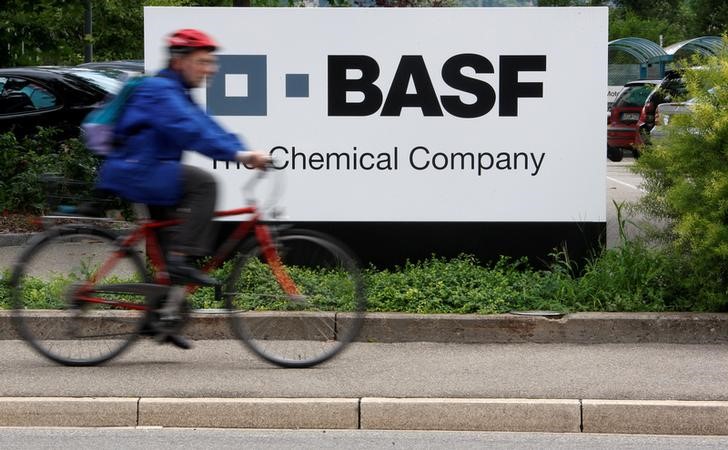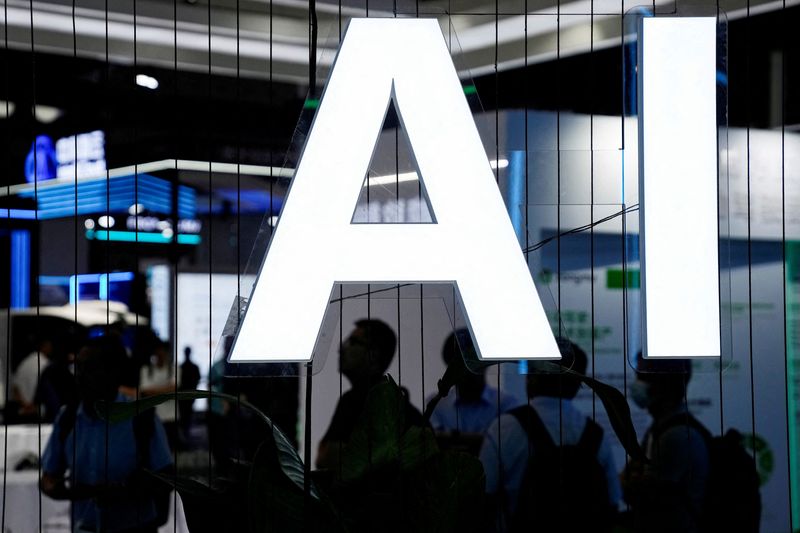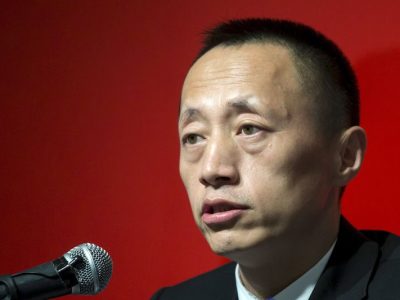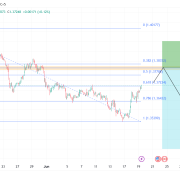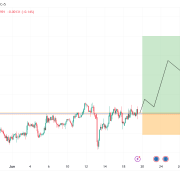
Pharming Group NV (PHAR), a biopharmaceutical company specializing in rare diseases, reported a solid third quarter in 2024, with significant growth in its product sales and the announcement of CEO Sijmen de Vries’s decision not to seek reelection after a successful 16-year tenure. The company is experiencing robust sales from its products, RUCONEST and Joenja, with the latter showing a substantial 73% growth.
Despite a net loss in Q3, the company’s year-to-date revenue has increased by 25%. The earnings call also highlighted the company’s strategic focus on expanding its pipeline, in-licensing opportunities, and global market reach, particularly in Japan and Australia.
Key Takeaways
CEO Sijmen de Vries will not seek reelection, marking a leadership transition after 16 years.
RUCONEST sales remain strong at $64 million in Q3, with the product being the second most prescribed acute therapy for hereditary angioedema in the U.S.
Joenja sales have surged by 210% year-to-date, contributing significantly to the company’s revenue growth.
The company is expanding its pipeline with a Phase 2 trial for leniolisib and pursuing in-licensing opportunities in rare diseases.
Efforts to diagnose new APDS patients could potentially double the diagnosed population.
Financially, Q3 saw a net loss of $1 million, with year-to-date revenues reaching $204.5 million.
Revenue guidance for the year is maintained at $82 million to $95 million, with expectations to hit the midpoint.
Company Outlook
Pharming Group anticipates significant growth from new patient identification and international market expansions.
The company is actively pursuing clinical stage opportunities in various therapeutic areas, with updates on potential deals expected soon.
Bearish Highlights
The company reported a net loss of $1 million in Q3, mainly due to higher finance expenses.
Cash and cash equivalents decreased from $215 million to $173 million, largely because of refinancing activities.
Bullish Highlights
Joenja’s growth is a key driver for the company’s revenue, with sales increasing by 210% year-to-date.
The company is successfully expanding its commercial presence and expects to continue this trend with upcoming product launches and market expansions.
Misses
Despite overall revenue growth, the company experienced a net loss in Q3, contrasting with the profit from the previous year.
Q&A Highlights
The CEO emphasized the importance of therapy for patients with APDS and the potential for market growth.
The complexities of HAE attacks were discussed, indicating a need for therapies that address multiple pathways.
Operational costs are being reviewed to ensure profitability, and the search for a new CEO with strong commercialization experience in rare diseases is ongoing.
Pharming Group NV’s 3Q 2024 earnings call underscored the company’s resilience and growth potential despite the announcement of a significant leadership change. With a strong product portfolio and an expanding pipeline, Pharming is poised to continue its trajectory in the rare disease market. The company’s strategic initiatives and commitment to patient care remain at the forefront as it navigates through the global healthcare landscape.
InvestingPro Insights
Pharming Group NV’s (PHAR) third-quarter performance in 2024 reflects a company in transition, balancing growth with financial challenges. According to InvestingPro data, the company’s revenue growth remains strong at 30.64% over the last twelve months, aligning with the reported 25% year-to-date increase mentioned in the earnings call. This growth is particularly impressive given the company’s focus on rare diseases and the recent surge in Joenja sales.
InvestingPro Tips highlight Pharming’s impressive gross profit margins, which is corroborated by the data showing a gross profit margin of 89.39% for the last twelve months. This robust margin underscores the company’s efficiency in producing its specialized medications and supports its ability to invest in pipeline expansion and market reach.
Despite the strong top-line performance, InvestingPro Tips indicate that analysts do not anticipate the company to be profitable this year. This aligns with the reported net loss in Q3 and the company’s focus on reinvestment for growth. The price-to-earnings ratio of -18.12 (adjusted for the last twelve months) further reflects the current profitability challenges.
It’s worth noting that Pharming operates with a moderate level of debt and its liquid assets exceed short-term obligations, providing financial flexibility as it pursues expansion opportunities and navigates the leadership transition.
For investors seeking a more comprehensive analysis, InvestingPro offers additional tips and metrics beyond those mentioned here. In fact, there are 6 more InvestingPro Tips available for Pharming Group NV, which could provide deeper insights into the company’s financial health and market position.
Full transcript – Pharming Group Nv (PHAR) Q3 2024:
Operator: Good day, and thank you for standing by. Welcome to the Pharming Group NV 3Q 2024 Results Conference Call and Webcast. At this time, all participants are in a listen-only mode. After the speakers’ presentation, there will be question-and-answer session. [Operator Instructions] Please be advised today’s conference is being recorded. I’d now like to hand the conference over to your first speaker today, Sijmen de Vries. Please go ahead.
Sijmen de Vries: Thank you very much, and good morning, good afternoon, ladies and gentlemen. Welcome to our results call. I’m happy, I’m here with the — to introduce my colleagues here, Stephen Toor, Chief Commercial Officer; Anurag Relan, our Chief Medical Officer; and Jeroen Wakkerman, our Chief Financial Officer, and we will take you through the results and obviously answer all your questions. So before I do that, I’d like to have the next slide and point you to the forward-looking statements because during this presentation, we will be making the usual forward-looking statements, which, of course, are expressions of our expectations, which can differ significantly, of course, from future results. So having said that, I would like to start with the next slide. You see a slide of my face there. And you’re seeing no doubt the announcement that after 16 years here at the helm, which is actually precisely next week, I have informed the Board of Directors that I will not be available for reelection. The company is in great shape today. So we have — and I’m reaching a beautiful age of 65 next week. So it would be a good moment to basically hand over the helm to a successor who can continue to build the company as we have been over the last few years into this rare disease company that we are building as we speak with a great pipeline and with a global geographical presence. And having said that, I would like them to go to the next slide because they see how we are going to build that. RUCONEST, obviously, on the slide number 5, please. On the next — RUCONEST is, of course, the pillar of the company has been the pillar for a long time. And you see the results of RUCONEST continues to grow more prescribers, more patients using RUCONEST in this increasingly competitive hereditary angioedema market, resulting in a plus in the three quarter results of more than almost $64 million and almost $173 million for nine months in 2023. So in other words, RUCONEST delivers significant cash flows from which we can actually build that company and build that portfolio and build out our commercial presence with, of course, Joenja, leniolisib the first and only FDA-approved treatment for APDS, a new ultra-rare immune disorder where Anurag Relan will speak later on about. And you see the revenues are marching quite nicely for ultra-rare launch to actually make $32 million in the first nine months of this year, which is, of course, an incredible growth versus last year is no mean feat. And of course, it’s a new disease. It’s ultra-rare. So we’ll talk a little bit later about the ways how we find these patients and about what’s going on with regards to the further exploitation of additional markets beyond the currently approved UK, US and Israel. And of course, the extension of the label by — with our pediatric patients. And then on the right-hand side, of course, we’re very excited that we have been able to start a Phase 2 in a way bigger indication for another primary immune deficiency for leniolisib, and Anurag Relan will speak to that later on as well. And last but not least, as you well know, we continue to be focusing on extending the portfolio further with an emphasis on in-licensing or acquiring a clinical stage with proof of concept, clinical proof of concept opportunities and other rare diseases to basically further leverage our commercialization presence in the US, UK, Europe and also in the future at markets like Japan and Australia. And when you see the next slide, you see the pipeline depicted in a visual, this is beginning to look like something, we are in these markets with Ruconest and Joenja, and obviously you see there the graphic depiction of the further rollout of leniolisib for APDS and on the bottom you see there the Phase 2 stage where leniolisib is for the subsequent indication to PIDs with immune dysregulation. So we’re beginning to build that pipeline and we’re, of course, working very hard to extend it with additional assets that actually build that portfolio further and leverage our commercialization infrastructure and ability to do clinical trials and get regulatory approvals further. And before I hand over to Steven to talk about commercial results, I would like to show you one thing, and that’s the next slide, that is where you see an enormous, incredible number of products that are available for hereditary angioedema patients. So it’s really good news for hereditary angioedema patients in the US, mainly we’re talking about here, that there are so many products available. There’s a lot of prophylactic therapies available here, and there’s a lot of — there is, of course, acute products available as well. There is, of course, one outstanding product, and that is Ruconest, and that’s the explanation why Ruconest is so strong, and Ruconest continues to be so strong, and will in the future continue to be so strong. Ruconest is high-dose protein replacement therapy. And all the products that you see there that are being on the market, and the main ones that are being used for the treatment of acute attacks, for hereditary angioedema and breakthrough attacks, are the ones that act on the kallikrein-independent pathway, bradykinin- kallikrein pathway. And a good example of that is Firazyr icatibant, which is by far the biggest volume of products used for the treatment of acute attacks. There is drawbacks associated with this approach. These products are not IV, which Ruconest is, and, of course, all our patients are very confident to do IV self-injections, but these products are, for instance, subcutaneous. And there is new — there’s potential news on the horizon, oral opportunities that are being actually reviewed by the FDA and are in clinical stage to actually address the acute attacks. However, the oral opportunities are tested in patients that are actually responsive to Firazyr and that is a big, big difference here in terms of patients that we’re serving with Ruconest. Every patient that Ruconest — that uses Ruconest, doesn’t use Ruconest because they can, but because they must, i.e. they are not responding to Firazyr icatibant therapy. Hence why you can see there’s a clear segmentation in the market, but Ruconest serves its own segment on the severe end of the market, and that is, of course, in relative terms, patient-wise, a relatively modest segment, but it is a segment where patients are very severely afflicted with the disease. A lot of the so-called type 3 patients, which are the most severely affected, and have recently been developed and have recently been acknowledged and discovered, and where more and more are coming, and that’s exactly where Ruconest with its unique mode of action, i.e. blocks all the pathways, serves the purpose, and will continue to serve the purpose, and serves that unique segment of patients. That is why we are confident and you see the results of that after all those years in the market, more than 10 years in the US market, by RUCONEST continued and continues and will continue to be the mainstay under our company, delivering those cash flows, which enable us to confidently develop the further growth potential of the company towards the future. Having said that, I would like to now hand over to Stephen to take us through the commercial aspects of the business and the results. Stephen, over to you, please.
Stephen Toor: Thank you, Sijmen. Good morning, everybody. If you could move to the next slide, please. Thank you. I think Sijmen did a really nice job of describing there out patient population and why RUCONEST is used. And that is, of course, as you can see on this slide, why RUCONEST is the second most prescribed acute product in the US market. And really, that talks very much to the features there. It’s an IV. It gives a bolus of C1. So it’s highly effective. It’s very quick acting. And as Sijmen said, that’s really critical for the patient population we serve that has a more severe course of HAE that doesn’t respond well to the alternative therapies. It’s also important to remember that the environment — in an environment where current and future options may not serve that severely affected population as to why RUCONEST will continue to endure and why we continue to be confident in the RUCONEST growth story in the US. We also continue to grow our prescriber base, and that’s important to mention, we have 57 new prescribers this year, we’re heading towards 800 in total. And that perhaps also — that success is also best demonstrated through our leading and lagging metrics, all of which experienced double-digit growth this year, including new enrollments, which gained momentum. In fact, we had over 100 in Q3, and that’s up 25% versus prior year. And all of this translates into around 12% revenue growth for the year so far, which is outperforming last year where we were at 10% revenue growth. So next slide, please. So moving to the Joenja launch. We achieved, as you know, a strong initial start to our US launch, and that growth steadied, which was expected as we come towards our next pending big inflection points. Over the 18 months since launch, we found approximately 50% of the known patients, which the prevalence suggests exists. And of those, 25% are pediatric. So they’ll begin therapy when we get that indication. Of the eligible patients, the eligible adult patients, we have 93 on paid therapy, and we have five pending already in this quarter, pending insurance authorization, which has been going very, very smoothly. And as we continue to find patients and process the adult patients on therapy, it’s important to note that our next significant growth opportunities or inflection points will be the launch in the UK, where Joenja was recently approved, the potential influx of the US patients in 2025 and then those pediatric patients I mentioned in 2026. So while we had initial strong growth, which has steadied in that adult population that we can serve, we have those three big inflection points coming along with global launches beyond that. So for patients outside of the US, and you can see here that it’s approaching 900 It’s important to note many of those are in various of our access programs, over 20%, in fact. And as we roll out approvals and launches globally, they’ll become eligible for reimbursed treatment. So all of that translates so far to $32 million in sales year-to-date. And then as the final section of this slide shows, we also continue to drive development of growth opportunities for outside of APDS markets with our teams working hard on life cycle management opportunities but for leniolisib, the molecule outside of APDS, and they have significant potential value to our patients and our customers. So with that, I’d like to hand over to our CMO, Anurag Relan, to talk more about those opportunities.
Anurag Relan: Thanks, Steve. And if we see on this slide, let’s start by reviewing some more details about our activities in APDS. And as you see here, we have a number of strategies to help find and diagnose new APDS patients. And first, on the left-side, on the education front, we continue to share and present new data on APDS, including the seriousness of the condition and on the use of leniolisib in these patients. And you see a number of conferences where we have shared this data, including just last week at the European Society for Immune Deficiency meeting in France. In the middle, you can see here a number of programs that we have to help diagnose new patients. And that includes our sponsored no-cost testing program, our work in family testing to help identify additional patients from family members of affected patients. And then lastly, on the right, and most importantly, we know there are a large number of patients with so-called variants of uncertain significance. And these are patients that have a genetic test result that has not been classified as having APDS or not, but they do have a mutation or a variant in one of the two genes that leads to APDS. We have a number of initiatives now in this work to resolve these patients with VUSs. We are actually doing a functional testing study with these patients to help get their blood samples reanalyzed and be able to tell if there is pathway activation or not. And a large-scale project that we have, and that’s called the main [ph] project, which is actually scheduled to complete this quarter will help us determine systematically and to be able to analyze all possible variants in these two genes. And we expect that based on these results and based on the initial results that we have so far, that up to 20% of patients with a variant of uncertain significance could turn out to have APDS. So you can imagine quickly by doing the math there that this could lead to almost a doubling of the currently diagnosed APDS population within a short period of time. And on the next slide, we can see the sources of future growth for Joenja. First of all, we continue to make progress in addressing the CHMP remaining CMC request. And as we mentioned previously, the CHMP had already concluded positive clinical benefit and safety with leniolisib in APDS patients. And as Steve mentioned, we also have the UK marketing authorization just last month. We’re also making progress in our filing in Japan, and we expect that we will be able to file in mid-2025. We continue to receive numerous requests from doctors to access leniolisib in other markets where there isn’t regulatory approval, and we are providing that through our expanded access programs as well as named patient programs. Steve also mentioned the Israeli marketing authorization, and then we also have reviews ongoing in Canada and Australia. And very importantly, we have now our first pediatric study where enrollment has been completed, and we expect results shortly on that. And on that basis, we will be able to file, we think, by mid to the second half of 2025 to expand the indication to a younger population down to the age of four. This is very important for APDS because, as you know, it’s really a pediatric disease. It’s a disease that starts in early childhood. Of course, being able to treat a progressive disease earlier on is logical, and we’re working hard to getting these patients potential access to Joenja at a younger age. And then we’ll talk a little bit more on the next study that we’ve just started, which is the use of leniolisib in primary immune deficiencies where there is immune dysregulation. And on the next slide, we can see the work that we’re doing there. And this work is work that we think there are significant opportunities to develop leniolisib in other primary immune deficiencies. And experts really have come to us and say that there’s a significant unmet need here, and there’s a potential for leniolisib to address this need. And in fact, they’ve been coming to us with requests to obtain access already. And this is, in fact, before we had the study up and running. And we actually have some use in use of leniolisib in so-called compassionate use cases, and these patients actually are doing well with signs of disease improvement. And this group of primary immune deficiencies are a broad group of disorders that often have a genetic basis. And the key aspect is the immune dysfunction as well as the immune dysregulation. The dysfunction leads to the increased risk of infection and the dysregulation leads to the other complications such as lymphoproliferation and autoimmunity. And again, these are features that we also see in APDS. And unfortunately, they also have shared with APDS, the high morbidity and mortality. We are now developing leniolisib for these patients with these primary immune deficiencies, and we’ve listed here a number of mutations, a number of diseases such as CTLA-4 haploinsufficiency, ALKPAS, NFKD1, and T10 deficiency, where these patients will be enrolled into a study. It’s important to remember that these patients have clinical manifestations that are very similar to APDS. There are no specifically approved therapies for these patients. And the patient population is significantly larger when we think of this group together, approximately 5 times larger than that of APDS. And we’re starting this clinical trial, this proof-of-concept Phase 2 dose-finding study just in the last week or two. In addition, we’re working on a third indication, and we’re in the process of obtaining regulatory feedback on this clinical development plan, and we’ll have more to share about that soon. And on the next slide, we can see some details about the study that we just started. So, this is, again, a Phase 2 proof-of-concept dose-finding study in 12 patients. And in fact, we started this — we announced the start of the study on 10th of October, and we expect the first patient to actually be dosed in the next couple of days. The study will include patients with a number of these different variants. It’s being conducted at the NIH. And again, the NIH was a critical partner for us as we developed leniolisib for APDS. And they again have come to us and say, look, there’s further opportunities to use leniolisib in another group of patients where there’s a significant unmet need. And we’re starting the study, as I said, in the next couple of days with the first patient being dosed. So, more to come on that soon as well as the third indication that I mentioned briefly. And with that, I’ll turn it over to my colleague, Jeroen Wakkerman, to talk about our financials.
Jeroen Wakkerman: Thank you very much, Anurag. I’ll first take you through the financial highlights of this quarter and then the year-to-date figures. So, revenues in Q3 increased by 12%. RUCONEST grew by 6% and Joenja by 73%. And the growth in both products was mainly driven by volume growth. Gross profit increased by $9.7 million, which is basically in line with the revenues and gross margin increased slightly. The increase in operating expenses compared to the same quarter last year was caused by a combination of continuing investments in Joenja in the U.S., launch preparation of leniolisib outside of the US and increased payroll expenses due to business growth. The operating profit amounted to $4.1 million compared to an operating profit of $1.9 million last year, and the increase was primarily due to the increase in gross profit, as I mentioned before, offset by increases in operating expenses. We had a net loss of $1 million in the quarter compared to a net profit of $3.4 million last year, and the change was mainly due to higher finance expenses resulting from unfavorable euro-dollar exchange rate developments. Cash and cash equivalents increased from $161.8 million at the end of the second quarter of this year to $173.3 million. And that was primarily driven that growth in cash by positive cash flows from operations of $9.7 million and last year, that was $3.5 million. So then moving on to the figures for the first nine months of the year. The total revenues increased by 25% in the first three quarters of 2024 to $204.5 million. Revenues of RUCONEST were 12% higher at $172.6 million and Joenja grew by 210% compared to the first nine months of last year. And remember, last year, the first sales commenced at the start of the second quarter in 2023. And the year-to-date revenues of Joenja also includes $3.2 million from EU and rest of the world, so ex US sales. The gross profit increased by $35.3 million or 24% and mainly due to the increase in revenues. And the increase in operating expenses in the first nine months was caused by a combination of continued investments in Joenja in the US., launch preparation for leniolisib outside of the US, and increasing R&D investments to expand the leniolisib franchise that Anurag just mentioned and increased payroll expenses due to the business growth. The operating loss amounted to $15.3 million compared to $6.5 million last year. And excluding the one-off effects in 2023 from the Joenja milestone payments and the Joenja PRV sale, the $15.3 million operating loss compares to $17.1 million last year, and that is depicted on the picture. The company had a net loss of $14.7 million compared to a net loss of $7.4 million in the first nine months last year. And again, this is affected by the other income from the PRV and the milestone payment for Joenja last year. The financial income of $1.4 million was realized versus financial expense of $2.5 million last year, so an income of $1.4 million versus expense of $2.5 million last year. And the cash and cash equivalents compared to the beginning of the year decreased from $215 million to $173 million, and that was primarily driven by the refinancing of the convertible bond earlier this year for an amount that was lower than the redeemed bonds. A bit more detail on the next slide on the operating expenses on this year. So the operating expenses in the third quarter decreased by 8% from $70.1 million in the second quarter of this year, and that brings our year-to-date OpEx to $198.7 million. And we do not expect the Q4 operating expenses to be significantly different from earlier quarters this year. Then going to the next slide on the financial guidance for this year. We stick to the overall range in terms of the revenue to $82 million to $95 million, and the current expectation is to end up around the midpoint of the range. Joenja is a significant driver of the revenue growth, and we also expect continued RUCONEST growth. And the Joenja revenue assumptions have not changed. We expect continued growth in patients on paid therapy. We expect a continued high adherence or compliance rate at above 85%. And the U.S. pricing, again, has not changed annual cost. The WAC is $566,000 and the gross to net discount is approximately 15%. And on the OpEx, as discussed, we’ve made some OpEx adjustments and the — so the overall OpEx expectation for the fourth quarter is around the levels of the prior quarters this year. And with that, I’d like to hand back over to Sijmen for the outlook for this year.
Sijmen de Vries: Thanks, Jeroen. Yes. And the outlook, as you heard from Jeroen, we expect to land in the middle of the range with regards to total revenues. You heard from Anurag, our continued progress in finding additional APDS patients. And I think also very important to look forward to for next year, the significant additional growth of patient numbers that will become available during second — next year as a result of the clarification of the U.S. situation. Increased revenues ex U.S. as well, albeit, of course, that goes on an individual patient basis via named patient programs, but it does really help and will continue to grow over time. Obviously, you heard about the expansion, how we are looking towards the expansion towards Japan and the pediatric label expansion, which again will be two significant growth engines for Joenja that can be expected somewhere in 2026 as is the subsequent launches on the European markets, of course. And of course, we’re looking towards Canada and Australia for further regulatory actions towards the future. And then we’re very, very excited that we have been able to start that Phase 2 trial in that population that is significantly bigger than APDS, PID with immune dysfunction where Anurag explained what the rationale is for that Phase 2. And we look forward to, of course, executing on that study and sharing the results as and when they come available with you. And those results, obviously, will be able to formulate the Phase 3 proposal that we will go then to the regulatory agencies with to get the product further developed. And then, of course, last but not least, we’re very active with our small but efficient business development group to actually look at clinical stage opportunities that are as close to the market as possible in areas like immunology, hematology, respiratory and gastroenterology, for instance. And of course, this, of course, business development is aimed over until you have the deal in hand, but we hope to update you on clinching a deal in the not-too-distant future. We’re very active in that respect, and there is quite a few assets that are available that look attractive. Having said that, I would like to now end this part of the call and would like to open the floor for any questions that you may have for me or my colleagues. Thank you very much.
Operator: [Operator Instructions] We will now take our first question. This is from the line of Sushila Hernandez from Kempen. Please go ahead.
Sushila Hernandez: Yes, thank you for taking my questions. I have a few on RUCONEST and Joenja, if I may. I’ll start with RUCONEST. So on RUCONEST, again, over 100 new patient enrollments this quarter. Do you see refills happening from previous quarters? And also, how do you see the ODP market developing in the coming years in terms of size? Thank you.
Sijmen de Vries: Would you like to answer that one, Stephen?
Stephen Toor: Yes. Thank you, Sijmen. Sorry, just unmuting. Yes, we do see Sushila, refills and they tend to reflect the patient’s course of disease. So with some patients, we see them more frequently than we do others. It just depends how frequently they attack and what their individual need is. But yes, many of our patients come back for refills. And I’m sorry, I didn’t catch the second question.
Sushila Hernandez: How do you see the ODP market developing in the coming years in terms of size?
Stephen Toor: ODP market, sorry?
Sushila Hernandez: The on-demand market.
Stephen Toor: Well, I think we’ve seen continued demand even with prophylactic therapies. So well over 50% of patients still have regular acute attacks. And so I don’t think we’ve seen a huge — we’ve seen with the generalization of [indiscernible], some decline in revenue and dollars for other companies. But in terms of the market itself, patients continue to have breakthrough attacks and continue to have a need for acute therapies. And as Sijmen illustrated so eloquently earlier, for RUCONEST specifically, we tend to serve a patient population that has a pretty severe course of disease, and that is not really or potentially won’t be well treated by some of the new agents as well as the ones that exist today. So pretty stable. And as we’ve demonstrated with our leading lagging metrics, some growth in certain areas.
Sushila Hernandez: Okay. That’s clear. And then on Joenja in the UK, how are your discussions with NICE progressing? Any color that you can share on that? And then also in the US, how many of the over 30 patients identified in the US do you expect to convert to Joenja and within what time lines? Thank you.
Anurag Relan: Yes, sure. With NICE, I mean, the discussions with NICE are productive and ongoing. But given that they’re confidential, I really wouldn’t want to comment beyond that, but we’re having a very good dialogue with them. And in terms of the patients that we’re identifying and finding, it’s obviously, the speed at which they come on therapy depends on the discussions with their insurance providers. But all eligible patients, I expect to eventually end up on therapy that want to be on therapy because our discussions with those insurers have gone very, very well. We haven’t had any — haven’t had any refusals at this point in time, just different types of processes depending on who we’re discussing the patient with.
Sushila Hernandez: That’s clear. Thank you.
Operator: Thank you. We’ll now move to our next question. This is from Joe Pantginis from H.C. Wainwright. Please go ahead.
Joe Pantginis: Hey everybody. Thanks for taking the questions. First off, Sijmen, I want to congratulate you for everything that you’ve done for the company and where you’ve brought it to date. And I just want to wish you the best of luck on your future adventures. So first, maybe a question for Jeroen, just wanted to see what maybe the plan is for your remaining convertible bonds.
Jeroen Wakkerman: The plan for the current convertible bond because the old one is completely redeemed, right? There’s nothing in the market anymore. So the current one, we just keep on the market. There’s no plan to redeem that one. And in terms of the timing of redeeming it, that’s too early to tell, right?
Joe Pantginis: Sure. No, that’s helpful. And then with regard to Joenja, obviously, very nice growth trajectory, and you’ve described nicely how you’re looking to expand that market. So I was just curious, can you describe any of the hurdles or headwinds that you’re seeing right now that might not be considered the usual, say, being able to get on — get patients to paid status with regard to insurance or identifying patients? Or what would you define as the potential headwinds?
Sijmen de Vries: Stephen, would you like to take that one?
Stephen Toor: Yes, certainly. Thanks, Joe. I think there’s a couple of things. I mean, obviously, we had a big bolus of patients at the start. Probably the short-term headwind is when you’ve identified almost half the patients in the US and you’ve got a good chunk of those adult patients who are currently eligible for therapy on therapy, then you expect the rate of growth to slow because we’re still tapping into that one segment of the market. But we do have that funnel building. So we have more adult patients coming in. We have pediatric patients coming in, and we continue to find patients globally, as the slide showed earlier, almost 900 already, many of whom are on various types of access programs. So I think the — before I pivot to some of the other challenges, the — is what I said earlier is that we have those big bolus events coming through with the is next year, the UK launch and then the pediatric indication. So I think short term, it’s just that we’re tapping into an ever decreasing population of adult patients. In terms of insurance challenges, I actually think that’s going very well in the US. The — as I mentioned, we haven’t had a single patient rejected. We do have different — different stages within the insurance. So we could go anything from a fairly quick approval to an NDC block, which takes longer to negotiate all the way through to perhaps having to go to a judge and actually get the patient on therapy. But every patient that so far wants to go on therapy is on therapy. So what we’re really seeing is what you would typically see. You have to educate physicians. It’s a new disease. You also have to educate patients and make sure they understand the disease and the implications of APDS and why it’s important to be on therapy and stay on therapy. And all of those are things that I think any commercial or medical organization would accept as prep of the course. Does that answer the question, Joe?
Joe Pantginis: It certainly does. Thank you, Stephen. And then my last question, I guess, it’s a short question in case you wanted to add any color. But with regard to pipeline expansion potential and with your BD, if I sort of heard you correct — or heard you correctly with regard to your comments about not-too distant future, it’s safe to assume that these are essentially mature discussions.
Sijmen de Vries: That’s a forward-looking statement, obviously, Joe. But yes, I mean — but I would say that over — if I look back at the last nine months, we have been in several mature further developed discussions, obviously. But again, as I just rightly said, it over until the deal is inked, right? And yes, we are indeed having interesting discussions. But that’s why I said, hopefully, in the not-too-distant future. But yes, we continue to be really looking at and getting quite a few interesting opportunities to look at. But we are very, very selective, obviously, with regards to what kind of disease, what kind of benefit the therapy gives. And if you look at what RUCONEST does for patients who have nowhere else to go and Joenja is a unique product in a disease that is deadly and that is progressive, then you see what we mean with making — really making the difference for patients because that is — that’s first and foremost, what we always look at, and we bring real therapies to the market.
Joe Pantginis: Great. Thank you for all the details.
Sijmen de Vries: Thank you.
Operator: Thank you. We will now take our next question. This is from Simon Scholes from First Berlin. Please go ahead.
Simon Scholes: Yes. Good afternoon. Thanks for taking my question. I was just wondering if you could give us an update on what percentage of the market or your volume for RUCONEST is derived from those who are taking it as a rescue product and are using prophylactic drugs, and what percentage you’re using as a first-line. And if you could give us an idea of how those two segments of the market are growing relative to each other? And then my second question is also on RUCONEST. I was just wondering whether in individual HAE patients attacks usually proceed over one pathway or do they proceed, I mean, the patients — do individual patients have attacks proceeding over several different pathways? And if that’s the case, I mean, if you’ve got patients where attacks proceed over several different pathways, I mean, how do the products which are orientated to say, the kallikrein pathway or the bradykinin pathway cope with the — with attacks coming over different pathways?
Sijmen de Vries: Simon, do you want me to take the first question and let Anurag answer second.
Simon Scholes: Yes, that was an idea. Thanks [indiscernible].
Sijmen de Vries: Okay. So, in terms of the evolution of the prophylactic market, Simon, the — or both markets, actually, I’d say they’re fairly stable right now. You had those three prophylactic launches over the course of two, three years earlier in the decade. And so, I think most — ourselves and most of the other players in this market would say, it’s around 78% where you’ve got patients on prophylactic and then you’ve got the rest that are purely acute. And then, of course, all those prophylactic patients are also — many of them carrying acute therapies on hand for breakthrough attacks. I would say it’s fairly stable, and I would expect it to remain so even when new players come in and they just fight it out for share.
Simon Scholes: Okay.
Sijmen de Vries: In terms of…
Simon Scholes: I mean how much of your volume is going towards rescue attacks — of rescue therapy?
Sijmen de Vries: Yes, that was going to be the second part of the answer, Simon, to your question is. I would imagine that almost all patients on RUCONEST are using for rescue therapy. And the reason I say that is, you have three — you have very good prophylactic options that are indicated for that and they work very well. So there is really no reason for a patient to want to use RUCONEST for prophylaxis when they have those options available. So, I think the majority of our patients are on rescue therapy.
Simon Scholes: Okay.
Sijmen de Vries: If that answers that satisfactory…
Simon Scholes: Yes. That’s fine.
Sijmen de Vries: And, if that’s okay to answer the more complicated question that you asked.
Anurag Relan: Hi, Simon. So it is indeed a complicated question. But I think I’ll turn you back to Sijmen’s slide about the pathways. And if you count on there, there’s actually 11 different points where C1 inhibitor acts to block a different protease. And we think, again, most people think that the contact activation system in the middle that leads to the production of bradykinin and then bradykinin acts on this one of two receptors to lead to angioedema, but we know that, again, in patients that are actually deficient of C1 inhibitor, they’re actually missing that protein and that acts on all of these pathways. So it’s not possible to know in a given patient when an attack occurs, what the relevance of a given pathway is. But what we do know is that if you block one pathway or one protein, so let’s say, use a monoclonal to block kallikrein, we know that patients still have attacks, right? So we can block it nearly completely as you do with a monoclonal and you can — a patient can still have an attack. So what that tells us by definition is that there must be some other element that’s leading to the production of bradykinin. We also know this in the case of Icatibant, right? So Icatibant blocks the B2 receptor, but we see patients on Icatibant still having recurrent attacks requiring redosing. And we think that, that probably is a consequence of bradykinin still being produced and acting on the B1 receptor. So in this case, a targeted approach can be quite elegant, but it is certainly not comprehensive. And I think the failures that we see, again, these are very good drugs that are on the market, these FDA-approved therapies, very good therapies, but they’re not necessarily comprehensive in their approach to blocking the entire — all of these cascades and all of these different points, where C1 inhibitor acts. And I think that is the reason why you still have patients having breakthrough attacks. It’s also the reason why you have patients needing redosing. And it’s also the reason why we think that we will remain a place for RUCONEST for these types of patients who are adequately treated by other therapies. I hope that answers your question.
Simon Scholes: Yes. Thanks very much. That’s very helpful.
Sijmen de Vries: Thanks, Simon.
Operator: Thank you. There are no further questions on the phone lines at the moment. So I will hand over to management to address any written questions.
Sijmen de Vries: Thank you. And we received indeed a few written questions here from our — from Alistair Campbell from RBC. He’s asking a question about any insights into the patient ramp in the US sales trajectory is now slow and steady. I think we more or less addressed that, Stephen, would you like to provide additional color on that?
Stephen Toor: Yes. I don’t think there’s a ton. I mean we are very active, as you would expect, in patient finding both in the US and globally. We continue to find patients some of whom are eligible more immediately and some of whom are not because they’re pediatric or they have some other form of clinical path that first requires addressing. And we’ve been very successful in getting those patients that are eligible right now on insurance. And I said, I’ll just repeat it quickly one more time. As you would expect in any launch, that rate of growth will slow as you put more and more of the eligible patients on therapy, which we’ve done very well. And we’ve got those big inflection points coming. So that’s global launches in some of the biggest markets outside of the US, the US population, which should come online next year and then the pediatric launches in 2026. So I would say a strong, steady progress at the moment with the patient funnel building for the future.
Sijmen de Vries: Thanks, Steve. Anurag, any more color you could give on the update on Joenja approvals, rollout ex US and time lines and things?
Anurag Relan: Yes. So I think we’ve talked a little bit about that. Obviously, for Europe, we’re continuing to make progress on addressing the one remaining CMC issue. We are in discussions with the Japanese regulators and expect to file next year there. We’ve talked about pediatrics also being able to have data in hand soon on the first study down to age four and being able to file on that basis also in the second half of next year. And again, a number of other markets where there’s regulatory submissions and reviews ongoing, Australia, Canada and of course, the recent success in the UK
Sijmen de Vries: Thanks. And then there’s another question here, Jeroen, I think on the cost base and plans to move the firm to profitability. So he says, if JOENJA ramp slower than anticipated, what does cost base look like in the context of what we just reported on getting the operating cost under control? Could you give some more color on that?
Jeroen Wakkerman: Yeah, sure. So what we have already done this year is to reduce the OpEx from earlier plans because of the EMA launch and that’s what we will continue to do. So if JOENJA growth is not as we expected it to be, then we will again and on a continuous basis review our OpEx and act accordingly.
Sijmen de Vries: Because that’s the game plan, right, to move the firm to profitability in the not-distant future.
Jeroen Wakkerman: That is indeed the game plan.
Sijmen de Vries: And as you have just seen, we delivered a profitable quarter already. So we look forward to updating you on subsequent results. And then the last question he has, of course, on my departure, and that’s an interesting question Alastair, the key attributes you want in a new CEO is, for instance, strong BD experience. The Board has made a profile for candidates that are, of course, being looked at in international markets that indeed have experience in, first of all, leading a company like this and, of course, having experience in commercialization and knowledge about what it takes to be successful in rare disease commercialization especially because that is a very different thing than mass markets. And of course, BD experience. Now, of course, we also have a Chief Business Officer on board recently that makes, of course, a big difference where I used to be myself very much involved in BD activities. That’s no longer the case. Alexander Breidenbach and his team are doing the work nowadays. So in other words, yes, these are the kind of attributes that are looked at. I’ve seen, of course, the profile. I’ve helped develop the profile for the new candidates and, of course, here, the search is in motion and, of course, we will update you as and when we have candidates available. And meanwhile, I’d like to illustrate that it is business as usual. We continue full speed ahead with what we have been doing in executing on the growth of the company and I look forward also to then be able to work alongside new colleagues because my term is not over until the next AGM. I look forward to actually bringing a new colleague in to the company in due time. I hope that answers Alistair’s question. Any more questions that we can answer?
Operator: [Operator Instructions] We have a question coming through please standby. Question from the line of Jeff Jones from Oppenheimer. Please go ahead.
Q –Unidentified Analyst: Hi. This is Iiza [ph] on for Jeff. Thanks very much for the update. We have a couple of questions. So for 93 patients on paid therapy plus five pending in third quarter 2024 for those diagnosed patients pending to be enrolled. How many of them in US? I’m curious about the main process to be done and the time to be waited before the formal enrollment? And how many patients of these you mentioned large than 30 diagnosed patients are in the US? Just curious how many are in the US. And how can we think about the average cost for each patient, I mean, APDS patient finding so far? Thank you.
Sijmen de Vries: Stephen, do you want to comment on that?
Stephen Toor: Yes. So the — so all the patients — the patients that I flagged were US patients. So the 93 on paid therapy in the US, the 5 pending are all within the US. I did flag those up to 900 separately, obviously, that are global, many of whom are on some form of access program. In terms of time to being on paid therapy, it can vary. I want to say, the average is between probably four weeks to six weeks. We have some that go longer if there’s an NDC block, and we have to negotiate with the plan there. But generally, it runs pretty smoothly. I mean the — I think health plans recognize this is a severe disease with significant implications and it’s progressive and you need to treat early. So I think it varies to be honest, but it’s relatively quick for a rare disease. And in terms of value, I mean, I think that’s very easy to probably work out. Jeroen referred earlier on to the gross to nets, and you’re aware of the price. So I mean the — generally speaking, I think we provide high clinical value to patients and their physicians for what is a very significant and tough disease. And on the flip-side, obviously, we also received the majority of that value based on what we charge the market.
Q –Unidentified Analyst: Thank you so much.
Operator: Thank you. There are no further questions at this time. So I’d like to hand back to the speakers for any closing comments. Thank you.
Sijmen de Vries: Thank you very much. Yes. Well, ladies and gentlemen, thank you very much for attending this result conference here. I would like to really emphasize again that we are going towards the midrange of our revenue guidance that we gave earlier in the year. You heard about the important growth engines that are ahead for the next segments of the APDS markets that can be added, most notably in the near future, the expected doubling of the patient pool that can be available for therapy in the United States as a result of the VUS clarification effort. It is a new disease. The new disease is not fully described yet, and that’s exactly what this U.S. validation efforts will bring. Then subsequently, of course, the fact that there will be a pediatric — we expect that there will be a pediatric indication, and we can serve those patients earlier on with this terrible chronic and deadly disease. We will see continued increasing revenues from the named patient programs outside of the United States becoming more significant during next year as well. And of course, we expect that we will get further regulatory actions in those territories where we are. The EU is well-defined. Canada, Australia are not well-defined, of course, when — but we do see — expect to see some more regulatory action. And of course, in Japan, we know when we are going to file then and we can get probably an accelerated review in Japan as well. But that, of course, remains to be seen. Then I think it’s important to realize that we just embarked on creating potential very significant inflection points towards the future with the start of the Phase 2 study for PID with immune dysregulation, a patient population that is well-described and which is readily available when the product could be approved in the future, which is different, of course, than APDS, which is a new disease. So that is, of course, a very — for the longer term, a very important growth engine for the company and for the leniolosib franchise. And last but not least, we hope to be able to update you on progress on the BD front in the not-too-distant future. So, thank you very much for attending, and we look forward to updating you in the near future on our full year results call, which will be normally in — somewhere in the beginning of March. Thank you very much for being here. And on behalf of my colleagues, thank you very much. Good bye.
Operator: Thank you. This concludes today’s conference call. Thank you for participating and you may now disconnect.
This article was generated with the support of AI and reviewed by an editor. For more information see our T&C.


